#organic neem oil
Explore tagged Tumblr posts
Text

Organic pure neem oil is a potent natural oil extracted from the seeds of the neem tree. Known for its wide range of medicinal properties, this oil is used for treating skin disorders, nourishing the scalp, and even as a natural pesticide. Its purity ensures that you get the full benefits of neem in every drop.
0 notes
Text
Glowing skin with Arezou's organic cold-pressed neem oil. This organic carrier serum is a remedy for pimples and is perfect for at-home acne treatment.
1 note
·
View note
Text
Organic Houseplant Care Guide | The Clean Method
Interested in organic gardening? Here are #organic compounds and products you probably already have at home that can help create a vibrant, #indoorgarden! #organicgardening #theleanmethod
Gardening should also be clean. Shop More Clean Goods Natural Houseplant Care with Everyday Organic Compounds Welcome to The Clean Method, your go-to source for sustainable and eco-friendly living. As more people embrace natural lifestyles, the demand for chemical-free houseplant care solutions has grown. In this blog post, we’ll explore various methods for maintaining healthy houseplants…
#eco-friendly methods#homeopathic horticulture page#houseplant#houseplant care#indoor gardens#natural alternatives#natural houseplant care#neem oil#organic compounds#organic gardening#plant growth#plants#sustainable living practices
2 notes
·
View notes
Text
Enhance your skincare routine with our Organic Neem Face Oil in a 30ml bottle. This luxurious oil is designed to nourish and rejuvenate your skin, harnessing the power of neem to combat dryness, reduce blemishes, and promote a radiant complexion. Perfect for daily use to achieve healthy, glowing skin.
#natural neem cream#organic body oil#organic & ayurvedic health supplements#pure castile hand wash 250ml#organic neem face oil 30ml#pure neem oil
0 notes
Text
Neem oil works as a botanical pesticide, the active constituents present in the neem oil damages the pro thoracic gland present in the stomach of the pest Eventually, the pest stops feeding and dies. It controls about 200 diffrent species of the insect and pest.
1 note
·
View note
Text
Kerala Naturals Coconut Oil: Key Features and Market Superiority
Kerala Naturals is renowned for offering a diverse range of pure and natural products. Among them, their Pure Raw Coconut Oil stands out for its exceptional quality and multiple benefits. Here are the best features of Kerala Naturals Coconut Oil and why it is considered the best in the market:

Premium Quality Coconuts:
Sourced from Kerala: The coconuts are sourced from the finest farmers in Kerala, known as the land of coconuts.
Superior Quality: The selection of premium quality coconuts ensures the oil’s high-grade quality.
Natural and Unrefined:
100% Natural: The oil is 100% pure, raw, and unrefined, preserving all its natural nutrients.
Unfiltered: It retains all the beneficial compounds due to the lack of filtration.
Sun-Dried Coconuts:
Enhanced Taste and Aroma: The coconuts are sun-dried for several days to enhance their natural taste and aroma.
Versatile Usage:
Culinary Uses: Suitable for cooking, from sautéing to deep frying, providing a healthier substitute for refined oils.
Dietary Supplement: Can be consumed as a dietary supplement to promote overall health.
Skin and Hair Care: Excellent natural moisturizer, great for dry skin, and nourishing for hair.
Baby Care: Gentle enough for baby care, ensuring soft and healthy skin.
Health Benefits:
Boosts Metabolism: Promotes healthy metabolism, aiding in weight management.
Improves Immunity: Contains compounds that enhance the immune system.
Single Origin & Direct Farm Produce:
Traceability: Single origin ensures traceability and consistency in quality.
Direct Farm Produce: Directly sourced from farmers, ensuring freshness and supporting local agriculture.
Small Batch Production:
Quality Control: Produced in small batches to maintain stringent quality control and freshness.
Artisanal Approach: Each batch is crafted with care, ensuring the highest quality standards.
Why Kerala Naturals Coconut Oil is the Best in the Market:
Authenticity and Purity: The oil is pure and unrefined, retaining all its natural properties, which makes it superior to many processed alternatives in the market.
Health Benefits: With its ability to boost metabolism, improve immunity, and nourish the skin and hair, Kerala Naturals Coconut Oil is a multifunctional product that caters to health-conscious consumers.
Versatility: Its wide range of uses, from cooking to skin care, adds to its value, making it a staple in households worldwide.
Ethical Sourcing: Sourced directly from farmers in Kerala, it ensures fair trade practices and supports local communities.
Customer Trust: With over 200,000 satisfied customers in more than 120 countries, Kerala Naturals has built a reputation for reliability and quality.
Kerala Naturals Coconut Oil is not just a product; it is a testament to the company’s commitment to quality, purity, and sustainability, making it a trusted choice for consumers globally.
https://www.keralanaturals.com/product/woodpressed-coconut-oil/
🌐 www.keralanaturals.com
Customer Care: +91 6282681925 / 8304085450
Amazon India : https://www.amazon.in/dp/B0B7WLL828
Flipkart : https://www.flipkart.com/product/p/itme?pid=EDOGGSBBMSBUHJYW
#natural#keralanaturals#naturalproductsstore#kanannaturale#beauty#coconut oil#pure coconut oil#kerala naturals coconut oil#pure natural products#herbs#spices#well ness products#beauty products#organic goodness#honey#black seed oil#neem oil#castor oil#ginger coffee#coffee#aloe vera#aloe vera gel#kasturi turmeric#wild turmeric
0 notes
Text
Organic Hair color | Australia
#ayurveda products#buy shatavari online#amla in australia#black sesame oil australia#wholesale herbs australia#neem oil australia#organic hair colour australia#ayurvedic products melbourne#organic indian spices online#ayurorganic
0 notes
Text
Follikesh Anti Lice Oil

Treat lice with the goodness of Ayurveda using Anti Lice Hair Oil. Completely safe for kids, this natural lice healing formula comes with a free lice comb inside the package. Now removing lice from hair has become easy and pain-free with the Ayurvedic blend of Shikakai, Henna, Amla, and Neem without any side effects.
Read More
#Lice treatment oil#Natural lice repellent#Anti-lice hair oil#Lice prevention oil#Herbal lice remedy#Head lice control oil#Organic lice treatment#Tea tree lice oil#Neem lice treatment#Coconut oil for lice#Olive oil lice treatment#Rosemary lice remedy
0 notes
Text
Vegan Clarifying Shampoo for Curly Hair
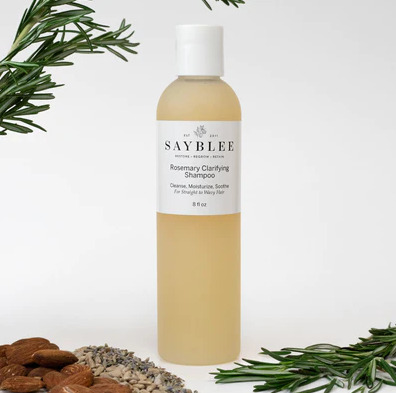
If your curls are feeling weighed down and lacking life, it may be time for a clarifying shampoo to remove product buildup. We've found the best clarifying shampoo for curly hair that deeply cleanses without stripping moisture. This sulfate-free formula uses natural extracts to lift away oils, dirt and residue that can accumulate if you regularly use cream or gel styling products. It balances pH levels and nourishes as it cleanses, so your curls feel refreshed and bouncy again. Say goodbye to product buildup weighing down your curls and hello to clean, healthy hair that you can style with your favorite curl creams and gels.
#vegan clarifying shampoo#vegan shampoo and conditioner#clarifying conditioner#vegan shampoo#rosemary shampoo for hair growth#rosemary shampoo and conditioner#rosemary hair products#organic hair products#nourishing shampoo#neem oil benefits for hair#clarifying shampoo for curly hair#best clarifying shampoo for curly hair#root stimulator
1 note
·
View note
Text
Gardening 101~ From Ladybugs to Lacewings: How to Attract the Right Beneficial Insects to Your Garden for Pest Control
“Keep love in your heart. A life without it is like a sunless garden when the flowers are dead.” Good Morning Quote For those of you who have been following me over the years know, I make every attempt to incorporate organic methods of fertilization, disease & pest management techniques. Gardening can be a fulfilling and rewarding hobby, although I would say the biggest challenges that…

View On WordPress
#garden design#Gardening#how do I attract beneficial insects to my garden?#how do I get rid of ahphids?#how do I get rid of tomato worms?#organic gardening#what are beneficial insects?#what are good plants for companion planting?#what are natural ways to deter garden pests?#what is companion planting?#what is neem oil?
0 notes
Text
Why Choose To Buy Organic Neem Cream?
It is known that the neem cream has been getting more and more popular the last few years because of the numerous positive effects it has on the human body. At NativeNeem.com.sg, the company sells excellent neem creams that utilize neem leaves for its healing abilities.
What is Neem Cream?
Natural Neem Cream is derived from the neem tree; the leaves and the oil that are produced from the trees are used in making the cream. Neem leaves have antimicrobial, anti-inflammatory and antioxidant activities that make it useful to be applied on the skin surface. Through the neem creams, skin gets to be moisturized, healed and revived for it to be able to handle other skin complications.
The benefits associated with the use of Neem cream
Here are some of the top benefits of using Organic Neem Cream:
Acne treatment, pimples eradication and controlling future skin related problems.
Remedial skin cream that helps reduce inflammation, redness and itch associated with rashes or insect bites
Can assist in fading scars, marks, and also aids in skin brightening.
Helps repair damaged skin by hydrating and nourishing the dry, rough skin.
Its major use is that it has anti-aging effects to help minimize the appearance of wrinkles and fine lines.
Antimicrobial action helps to guard against getting infected.
This product’s all-natural formula does not contain any harsh or irritating chemicals that may harm sensitive skin.
Why Should You Purchase Neem Cream from NativeNeem.com.sg?
NativeNeem offers organic, authentic neem creams for sale which are 100% organic and original from Singapore. The creams they offer incorporate cold pressed neem oil and other natural nourishing oils such as jojoba, almond, and tamanu with no inclusion of poisonous compounds. The creams are not harsh, not like the soap kind that you can only use once in a while but they are very effective for various skin problems.
Let natural healing be your best practice today through Neem! Choose the desired type of cream from the listed range of NativeNeem creams that would suit your skin type.
0 notes
Text
Best Organic Hair Serum for Hair Growth - Helping Live Healthy
Get the best organic hair serum for hair growth and maintaining healthy locks. Our carefully curated selection of natural ingredients will nourish your hair from root to tip, leaving it stronger, shinier, and more vibrant. Experience the power of nature with our range of hair serums and embrace a healthier, happier you. Buy Now!!
0 notes
Text
Buy Neem Oil Virgin
Buy only the best quality Neem Oil Virgin from our online store. 100% pure and natural, this cold-pressed neem oil is perfect for use in skin care products, hair care treatments, and aromatherapy.

#Buy Neem Oil Virgin#Organic essential oils#Essential oils#Essential oil manufacturers#Essential oil wholesale distributor#Wholesale essential oils supplier in USA#Wholesale essential oils supplier USA
0 notes
Text

Our Australia Pet Spray is designed to keep your pets comfortable and pest-free. Infused with natural ingredients, this spray helps repel insects while being safe for use on your furry friends. Perfect for keeping your pets protected and happy in various environments.
#natural neem cream#organic body oil#organic & ayurvedic health supplements#pure castile hand wash 250ml#organic neem face oil 30ml
0 notes
Text
I bought a Gartenmeister Fuchsia plant for my birthday back in January. It was a centerpiece all winter long, but recently it started looking a bit sickly. I'm not a "green" gerdener anymore (haha), but I am also by no means a master. I think it was infected with powdery mildew, but I also convinced myself it was spider mites. I try to keep things all -natural out there, so I dried it out and sprayed it with some neem oil after pruning it back a bit. I really should've pruned off all of the infected bits, but I didn't want to lose the flowers.
I did that a few more times, unable to commit to a hard prune because I kept telling myself "I don't know what I'm doing, so maybe it's not sick. Maybe it'll fix itself. Sure would be nice to have those flowers back." I finally gave up and cut it to the bone yesterday, but yesterday was too late. I had to remove every single leaf because I dithered for too long. It's probably not going to make it.
I feel the same way about our culture. US culture. Western culture (though its really a global problem). The Entertainment Industry. The Media. It's sick. We probably need some rather serious surgery to fix the problem, but we just will not see a doctor. To see a doctor would be to admit there's a problem, and for some that is the greatest sin of the 21st Century. Maybe some of us are just hoping the system will recover on its own so we can have our pretty flowers back.

For me, it was around 2010 or so when I first started to smell something "off". The symptoms had certainly been around a while. This was just when I noticed. This was when I got my first, "Hey, let's not make fun of corporations" note. It's when The History Channel stopped airing stuff about history in favor of aliens because that's where the money was. And rather than rebranding, they just left it as "History", encouraging future generations to believe whatever they felt like. This was also about when traditional news outlets started skewing to clickbait in order to compete with sites that were clearly 100% not legitimate news sites. Again, as long as the money is right it's "just entertainment" and you' can're welcome to believe it if it means you'll watch more.
I'm all-in on Dead Internet Theory now. The disparity between what major news media outlets will report and what you see from actual people on Tumblr or Threads or Reddit is pretty shocking. And those sites are already compromised by bots and bad actors. The tools exist now to actively bamboozle millions of people, and I have no doubt we're already seeing some of this now. In six months or a year you'll find out it (whatever it was) never happened or was generated by an LLM. The time to stop listening to anyone online was a year ago.
Trust no one.
Not even me!
It's cultural rot. It's spreading faster and faster, and I'm not sure what happens when we get to the end of this ride. Actually, I AM sure what happens. If we don't prune back hard now, then the rot takes over. Best-case, you clip the infected branches off too late and it takes years to recover. Worst case? Nature soldiers on but the plant succumbs to infection and dies completely, replaced (eventually) by something that can actually hack it in that spot.
When humans produce art and information, and then comment on that art and information by producing more art and information, we call it "culture". We're moving toward a time when the vast majority of art and ideas we get out eyes on won't be created by humans. Or at the very least won't be created with the purpose of commenting on or enriching the organic human experience. When that happens, what will we call it? What will remain of our culture?
214 notes
·
View notes
Text
Un-Actions, or Restriction of Activities
This is my first post in a series I’ll be making on how to increase biodiversity on a budget! I’m not an expert--just an enthusiast--but I hope something you find here helps!
There’s a good handful of ways you can help increase biodiversity in your yard that don’t require buying things--in fact, these may actually help you save money in the long run! They may seem small and simple, but every bit counts! Whether you can do these in totality, or just limit how often you do these actions, it’ll make a difference.
Not Mowing, or Mowing Less Often
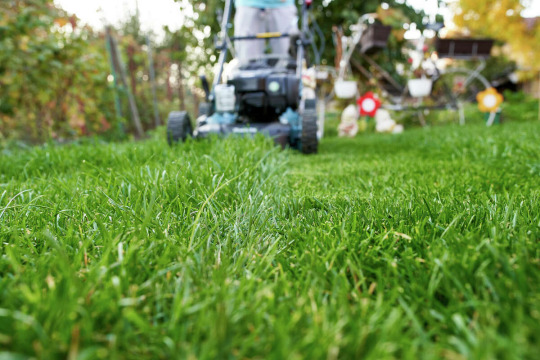
Turf grass lawns are considered a monoculture, meaning they don’t provide much opportunity for insects to find habitat--so few other creatures find them enjoyable either. An expanse of turf grass is, in many ways, a barren wasteland in the eyes of wildlife--too exposed to cross, with few to no opportunities for food or shelter, leaving them exposed to blazing hot sun, freezing cold, or any predators that may be lurking nearby. A place to be avoided. The simple act of letting your grass grow unbothered gives a chance for wildflowers to grow, and for your grass to grow taller--providing more habitat for insects, which then provides more habitat to birds and other creatures that feed on said insects. Wildlife want nothing more than to skirt by unnoticed, so even leaving the grass tall along the edges of a fence or yard can help a little. Even restricting mowing to every other week, or at a higher blade setting, can be a huge help. If HOAs or city ordinances are fussy about lawn length in the front yard, you can likely still keep grass higher in the backyard. Or, you can create a ‘feature’ where grass is allowed to grow long in a specific area. If it looks purposeful, people are more likely to accept it. Not mowing under trees or close to shrubs not only leaves space for wildflowers to grow, but also means you don’t have to deal with mowing over bumpy roots and other difficulties. Cutting different areas at different times can be an option for letting grass grow long in some areas while still having available places for play and entertainment. I’ve seen some people plant flower bulbs when pulling up weeds, so in the future they'll bloom in early spring before mowing is usually necessary. This could be another fun way of adding biodiversity to a lawn without--or before you--begin mowing in spring.
Not worrying about mowing, or doing it less often, saves you in time, money, and energy. You won’t have to buy as much gasoline for your mower, and Saturday afternoons can be free to be enjoyed in other ways aside from being sticky and sweaty and covered in grass stains. In addition, you’ll likely be lowering your own carbon emissions!
If you do have to mow your lawn, I’ve got ways you can use your grass clippings to boost biodiversity later in the post series!
Not using pesticides, herbicides, fungicides, etc.
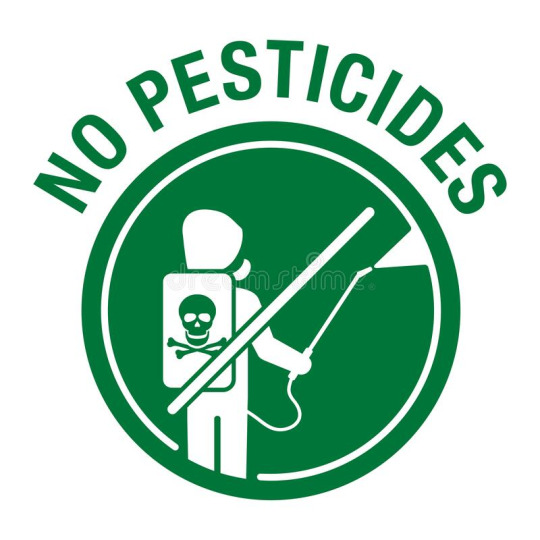
One of the next-biggest non-actions you can do asides from not mowing is using fewer fewer to no herbicides, fungicides, and pesticides in your yard. This’ll easily allow for more biodiversity. Allowing more insects and a wide array of plants to thrive will feed back into the entire food chain in your area. In addition, these types of chemicals have been tied to algae blooms, death of beneficial insects, harm to birds, fish, and even humans. Soil is supposed to be full of fungi, especially fungal mycelium that essentially acts as a network for plants to communicate, share nutrients, and support each other--fungicide kills that, and typically makes all other lawn problems even worse in a negative feedback loop. It may take awhile to see the benefits of avoiding these chemicals, but once you see it, it really is astounding.
However! I can’t lie and say that there haven’t been points where I needed to use pesticides at some points in my gardening journey. In these cases, try to use products that are organic--like diatomaceous earth, neem oil, etc--and use them accurately, correctly, and sparingly. Follow instructions on how to apply them safely and responsibly--for example, on non-windy days and during times when bees and other pollinators aren’t likely to be out and about. With some pests (read: oleander aphids, in my experience), a simple jetstream of water is enough to force them off the plant where they’ll be too weak to get back. Eventually, you should have a balanced enough ecosystem that no one insect pest causes a major issue with the work you’re doing to boost biodiversity.
If you can bear to, try handling pests manually. Squishing pest bugs in your hand is a pretty foolproof way to get rid of some problems, or spraying them with a mix of soap and water can do the trick on some insects. Alternatively, picking them off your plants and into a bucket of soapy water is also a valid option. You’ve heard of baptism by fire, now get ready for… baptism by soap?
But also! Try reconsidering what you consider a pest! Tomato hornworms are hated by gardeners, for devouring the foliage of beloved tomato, pepper, and potato plants. But killing the tomato and tobacco hornworm means getting rid of sphinx moths, also known as hummingbird or hawk moths! Hawk moths are vital to the survival of many native plants, and are sometimes even the only species that pollinates them. If you can bear to, consider sacrificing a few tomato plants, or growing a few extras, so we can continue having these beautiful moths for years to come. After all, they may not even do significant damage to the plants!
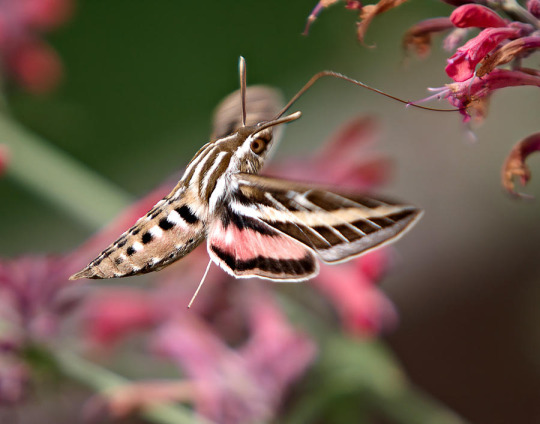
With that in mind, be friendly to your natural pest managers! Lacewings, ladybugs, praying mantises, wasps, birds, bats, and more will help manage pest populations in your environment! Encourage them by planting things they like, providing habitat, and leaving them be to do their work! Avoiding pesticides helps make your garden a livable environment for them, too!
Letting Weeds Grow
Many of the plants we know as 'weeds' are actually secondary succession species and native wildflowers. Milkweed was regarded as a noxious, annoying weed for a long time, and now people are actively trying to plant them after learning about the important role they play in our environments! Weeds are adapted to take over areas that have been cleared out of other plants after a disaster, so they're doing much of the initial work in making a habitat for other creatures. In fact, many of them will simply die back as the environment repairs itself.
An important thing to note is to please make sure that your ‘weeds’ are not invasive species. Work on learning how to identify native and invasive species in your area, and pull out what’s harmful to leave room for what’s good!
Don’t Rake (Or At Least Don’t Bag Your Leaves)
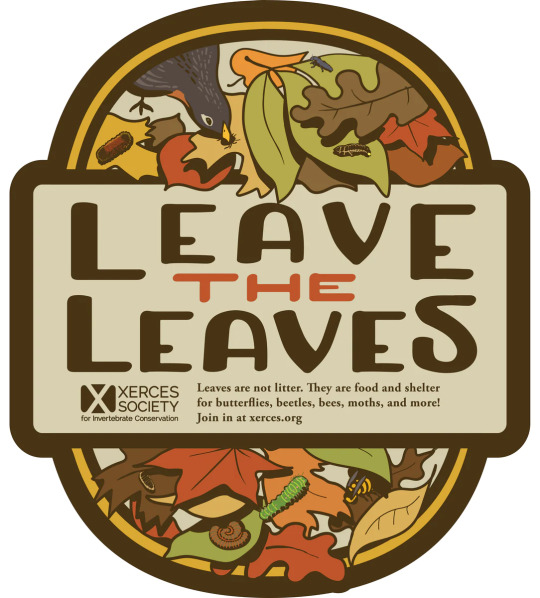
Many insects overwinter in piles of leaves that we often rake away and bag up in the fall and winter. By doing this, we are actively throwing away the biodiversity of our neighborhoods! If you can, leave the leaves where they fall!
If you do need to rake, put the leaves in places wildlife can still access it instead of bagging it up. Move your leaves into garden beds to serve as mulch, or along the edge of fences to rest while keeping egg cases and hiding bugs intact and free to release come spring.
Leave Snags Where They Are
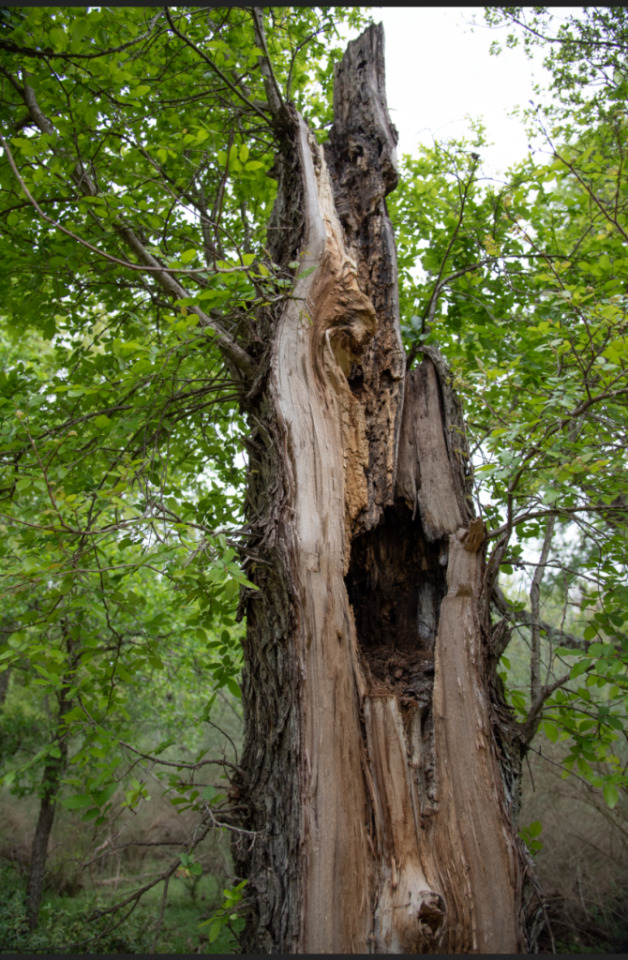
Snags are dead trees/dead branches on living trees. They provide an important wildlife habitat--many birds nest in them, or use them to seek cover from rain, and many insects will also live in snags (making them an additional food source for birds and other creatures). Tree cavities are used as nests by hundreds of bird species in the US, and many mammals use them as well, such as bats, squirrels, raccoons, and sometimes even bears. Some trees form cavities while they’re still alive, but in conifers they’re more likely to form after death. Crevices between the trunk of a dead tree and its peeling bark provide sun protection for bats and amphibians, and leafless branches make great perching areas for birds of prey to hunt from above. The decaying wood is home to insects and fungi, who then feed birds, mammals, amphibians, and reptiles. Do check on the snags regularly to ensure they don’t serve a threat to any nearby structures, but whenever possible, leave them be!
Keep Your Cat Inside
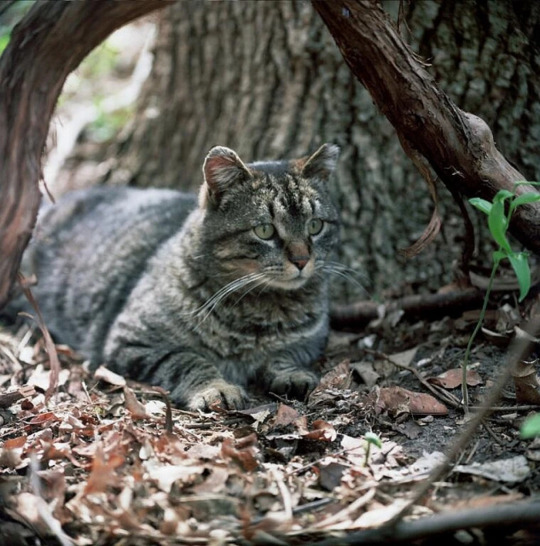
If you have an outdoor cat, consider making the adjustments to have it be an indoor cat. If you have an indoor cat, keep it as an indoor cat. Free ranging cats impact biodiversity through predation, fear effects, competition for resources, disease, and more. Keeping little Mittens inside does a lot more to help than it may seem from the outside.
That’s the end of this post! My next one’s gonna be on things you can add to your space that aren’t directly related to growing plants. For now, I hope this advice helps! Feel free to reply with any questions, success stories, or anything you think I may have forgotten to add in!
#biodiversity#solarpunk#gardening#outdoor gardening#lawn culture#anti lawn culture#environmental stewardship#(i think that counts)#ani rambles#out of queue#the biodiversity saga#I know I said this in the masterpost already but another reminder some people aren't in a position to do all or some or even any of this#i have so far been unsuccessful in convincing my parents to not mow or rake because we live in an HOA neighborhood#but do what you can/are able to! it'll help!
1K notes
·
View notes